Home Remedies for Cracked Fingers: 14 Easy At-Home Fixes
Easy-to-follow treatments that can help you deal with the cracks on your fingertips.

Image: Istock
Cracked fingers can be due to cold weather or a symptom of a medical condition. Either way, it is annoying, painful, and uncomfortable. The good news is that there are a few home remedies for cracked fingers you can try to get rid of them. If you develop some possible health complications, you should consult a doctor for further treatment. In this article, we take a look at some quick and simple remedies for cracked fingers you can try at home!

In This Article
What Is Cracked Skin?
Cracked skin, also known as chapped skin, is a condition where the skin’s surface becomes dry, and rough, and develops small, painful splits or cracks. It is often caused by dryness, dehydration, harsh weather, or exposure to irritants. Cracked skin can occur on hands, feet, lips, or any part of the body. It can be uncomfortable and lead to pain, itching, and increased infection vulnerability.
Key Takeaways
- Harsh soaps, sunburn, excessive hand washing, and hand eczema are some common causes of dry and cracked skin on fingertips.
- Massage your hands with coconut oil or petroleum jelly to keep dry and cracked fingertips moisturized.
- Try using tea tree oil with carrier oils to speed up the healing process and prevent any infection.
- The ricinoleic acid and vitamin E content in castor oil can promote skin healing and keep your hands soft and moisturized.
What Causes Cracked Skin On The Fingertips?
Although fingertips peeling or cracked skin on the fingertips is not much of a concern, it might have painful consequences
. A number of factors could cause the skin on your fingertips to peel off. They are:
- Dry skin, especially during winters
- Repetitive washing of hands
- Use of soaps and other products with harsh chemicals
- Sunburn (it is often followed by dry and peeling skin a few days after the first burn)
- Dry, hot, and cold weather
- Sucking on the thumb
- Chopping vegetables
- Contact with detergents
Peeling and cracked skin may also be due to some underlying medical conditions like:
- Allergies: If your skin comes in contact with an allergen, it may begin to peel.
- Niacin (or Vitamin B3) deficiency.
- Vitamin A toxicity: Consuming too much vitamin A may also cause your skin to crack and peel.
- Hand eczema: Genetics, as well as exposure to certain chemicals, can cause hand eczema.
- Psoriasis: A skin disorder that may appear as silver plaques or lesions on your skin.
- Exfoliative keratolysis: A skin condition that causes blisters, which may later begin to peel.
- Kawasaki disease: A rare disease that usually affects children under 5 years of age.
Let us now learn how to deal with this condition using natural remedies.
How To Heal Cracked Fingertips At Home
- Vaseline
- Paraffin Wax
- Epsom Salt
- Coconut Oil
- Tea Tree Oil
- Castor Oil
- Diaper Cream
- Flaxseed Oil
- Super Glue
- Liquid Bandage
- Gloves
- Chapstick
- Flexitol
Home Remedies For Cracked Fingertips
1. Vaseline
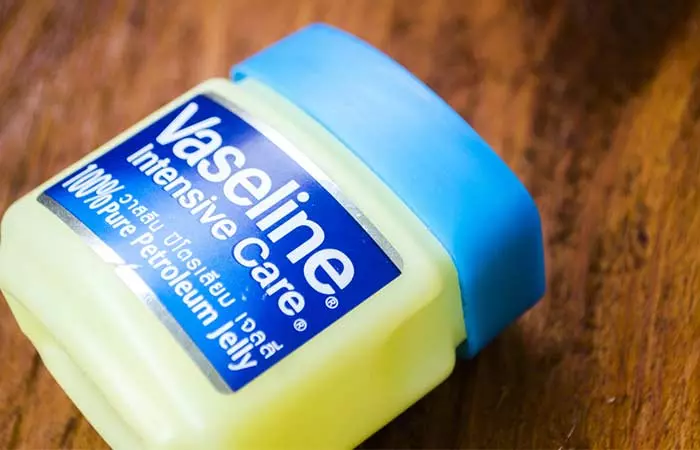
You Will Need
Vaseline (as required)
What You Have To Do
Take some Vaseline and apply it gently to your fingers and hands.
How Often You Should Do This
You can do this a couple of times daily, especially when your hands begin to turn dry.
Why This Works
Vaseline is also referred to as petroleum jelly. In addition to instantly moisturizing your dry and cracked fingertips, it forms a layer on your skin and protects it from further infection (1).
2. Paraffin Wax
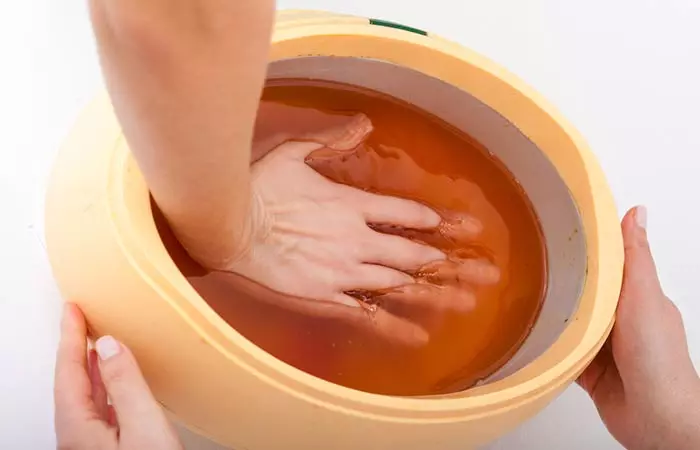
You Will Need
- Paraffin wax
- Gloves
What You Have To Do
- Take a block of paraffin wax and heat it.
- Wash your hands with mild soap and moisturize them.
- Immerse your hands in the wax and leave them in for a few seconds.
- Take your hands out and repeat this process 3 to 4 times.
- By now, a paraffin glove must have formed on your hands.
- Place your hands in a plastic cover and let them dry for 10 to 15 minutes.
- Pull the cover off gently and remove any remnants of the wax from your hands.
How Often You Should Do This
You can do this once every week or two.
Why This Works
Paraffin wax has emollient properties that keep your hands soft and supple
. It also traps moisture and helps in getting rid of dead skin cells (2).
3. Epsom Salt
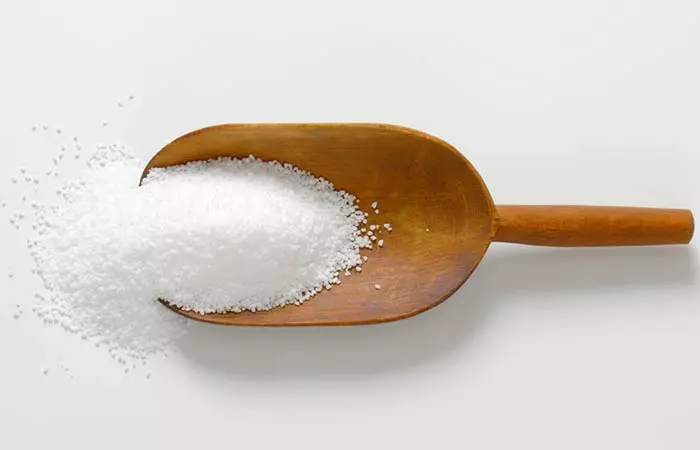
You Will Need
- 1/2 cup of Epsom salt
- Water (as required)
What You Have To Do
- Fill a bucket or basin with warm water.
- Add about half a cup of Epsom salt to it.
- Soak both your hands in the water for 10 to 15 minutes.
- You can also exfoliate your dry hands with the coarse grains of Epsom salt.
How Often You Should Do This
You can do this thrice a week.
Why This Works
Epsom salt is widely used for soothing and rejuvenating the skin. Soaking your hands in an Epsom salt solution can help in the removal of dead skin cells from your skin, thereby helping treat cracked fingertips (3).
4. Coconut Oil
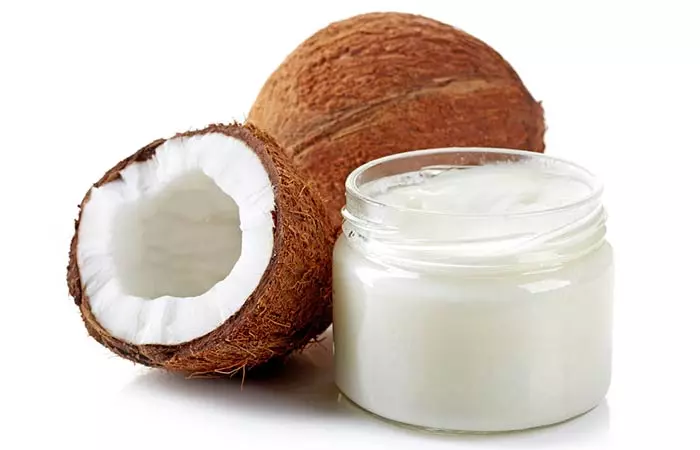
You Will Need
1 tablespoon of coconut oil
What You Have To Do
- Take a tablespoon of virgin coconut oil and massage it into both hands.
- Allow your skin to absorb the oil completely.
How Often You Should Do This
You can do this once daily, preferably after taking a bath.
Why This Works
The medium-chain fatty acids in coconut oil have excellent emollient and moisturizing properties, which help soothe the dry and cracked skin around your fingertips (4). Additionally, the antimicrobial properties of coconut oil protect your skin from infections (5), (6).
5. Tea Tree Oil
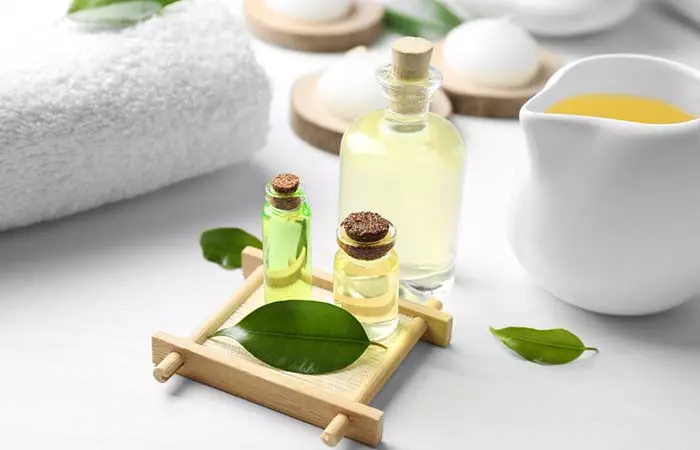
You Will Need
- 2-3 drops of tea tree oil
- 1-2 teaspoons of coconut oil
What You Have To Do
- Add two to three drops of tea tree oil to coconut oil and mix well.
- Apply this mixture to your fingertips and leave it on overnight.
- Wash your hands thoroughly the next morning.
How Often You Should Do This
You must do this at least once daily, before going to bed.
Why This Works
Tea tree oil is a natural antiseptic with excellent antimicrobial properties (7). Hence, it can speed up the healing of cracked skin and protect it from microbial infections.
Caution
Do not use tea tree oil without diluting it in any carrier oil as it might cause irritation.
6. Castor Oil

You Will Need
Castor oil (as required)
What You Have To Do
- Take a little castor oil and massage it gently into the affected area.
- Wash it off after 15 to 20 minutes.
- You can also keep the oil on overnight.
How Often You Should Do This
You must do this at least once daily.
Why This Works
Castor oil is a rich source of ricinoleic acid and vitamin E. These nutrients impart amazing emollient and healing properties to it that can help heal your skin. The oil can also keep your hands soft and moisturized for a long time (8).
7. Diaper Cream
You Will Need
Diaper cream (as required)
What You Have To Do
Apply diaper cream to your hands before going to bed and leave it on overnight.
How Often You Should Do This
You must do this once daily, before going to bed.
Why This Works
Your baby’s diaper cream that is used to prevent rashes can also be used to heal the dry and chapped skin on your fingertips. This is mainly because most diaper creams contain zinc. Zinc not only helps in healing cracked skin but also softens the skin with its anti-inflammatory and antimicrobial properties (9),(10).
8. Flaxseed Oil
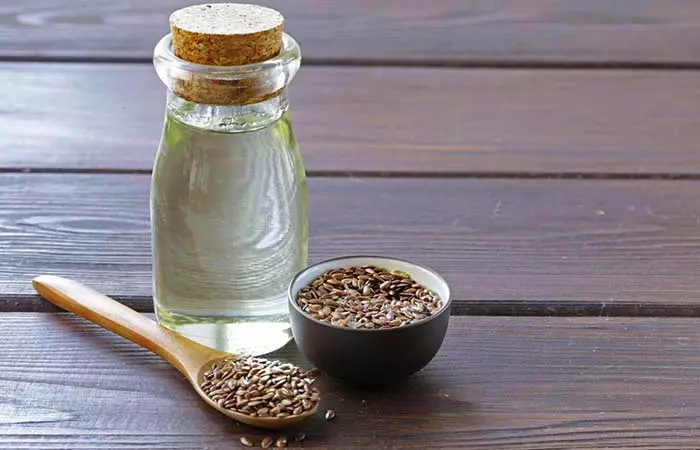
You Will Need
A few drops of flaxseed oil
What You Have To Do
- Take a few drops of flaxseed oil and apply them to the affected areas.
- Massage the remaining oil on both hands.
- You can also take flaxseed oil supplements after consulting your doctor.
How Often You Should Do This
You can do this 1 to 2 times daily.
Why This Works
Flaxseed oil is derived from the flax plant. It contains fatty acids that heal dry skin and keep it soft. The powerful anti-inflammatory properties of flaxseed oil can help reduce inflammation and redness (11).
9. Super Glue
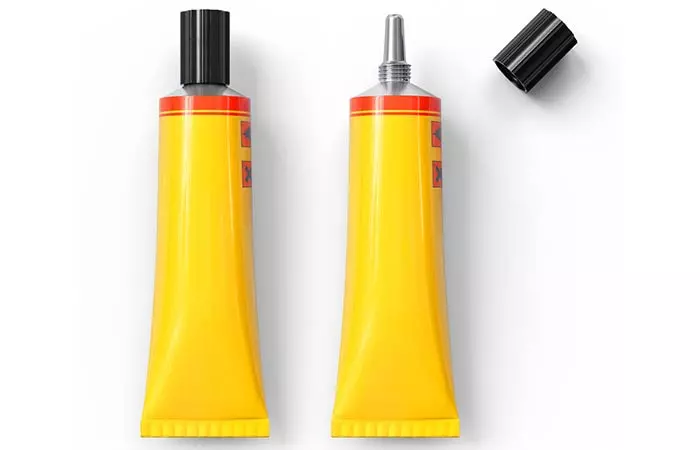
You Will Need
Super glue
What You Have To Do
Put a drop of super glue on the painful cracks on your fingertips and allow it to dry.
How Often You Should Do This
You must do this once daily, before sleeping.
Why This Works
Super glue can be a quick fix to heal cracked fingertips. Just a dab of it will keep your skin covered. However, research suggests that using super glue may lead to complications like necrosis (12). This is because glues may be made of ingredients that can irritate your skin. So, make sure you look at the packaging before going ahead with this remedy.
10. Liquid Bandage
You Will Need
Liquid bandages
What You Have To Do
- Use liquid bandages to seal the deep and painful cracks on your fingertips.
- If you do not have liquid bandages handy, normal bandages will also do the trick.
How Often You Should Do This
You must do this once every 1 or 2 days.
Why This Works
A liquid bandage forms a polymeric layer that binds to the cracked fingertip. This locks the moisture in your skin and protects it from dirt and microbial infections, thereby helping your cracked skin heal faster (13).
 Quick Tip
Quick Tip11. Gloves

You Will Need
- Hand moisturizing gloves
- Petroleum jelly (optional)
What You Have To Do
- Wear a pair of moisturizing gel gloves that are specially made for treating dry and cracked hands.
- If you cannot find such gloves, apply a thin layer of petroleum jelly to both your hands and seal it using cotton gloves. Leave it on overnight.
How Often You Should Do This
Wear these gloves daily for faster results.
Why This Works
Gloves help lock in the moisture in your hands and protect them from the harsh weather outside during winters. Moisturizing gloves are also available that keep your hands moisturized for most of the day and aid quick healing of dry and peeling skin.
12. Chapstick
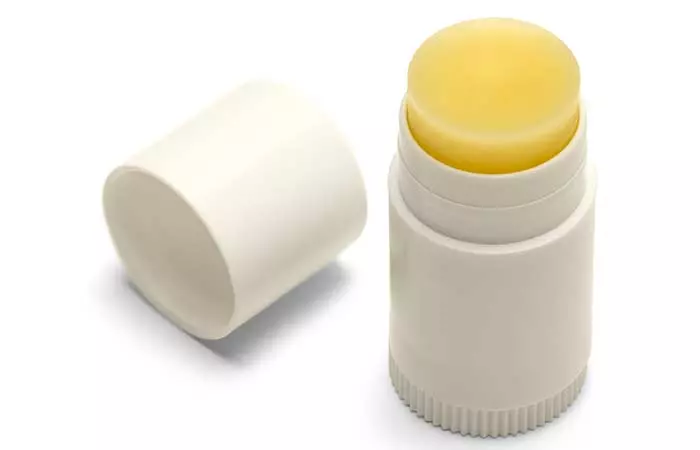
You Will Need
Non-flavored chapstick
What You Have To Do
Apply a thick layer of chapstick to your cracked fingertips.
How Often You Should Do This
You can do this multiple times daily, almost as many times as you apply it to your lips.
Why This Works
Most chapsticks contain emollient and moisturizing components like beeswax, camphor, and vitamin E. These ingredients possess excellent healing and softening properties, and are hence one of the best options to heal chapped skin, including that on your fingertips (14) (8).
13. Flexitol
You Will Need
Flexitol
What You Have To Do
Apply flexitol to the affected areas.
How Often You Should Do This
Do this twice daily.
Why This Works
Flexitol is a concentrated moisturizer and exfoliator that can help in keeping your skin soft. Regular application can also help in getting rid of cracked fingertips. Flexitol is antifungal and can thus protect your chapped fingers from microbial infections as well.
14. Vitamin E Oil
You Will Need
Vitamin E oil
What You Have To Do
Apply vitamin E to the affected areas and massage gently.
How Often You Should Do This
Do this once daily before bedtime.
Why This Works
Vitamin E is known for its moisturizing and healing properties. It acts as an antioxidant to protect the skin from free radical damage (15). This may help restore the skin’s natural moisture, reducing dryness and preventing further irritation.
Apart from the above-listed skin-nourishing ingredients, you can also apply rose water and oatmeal to soothe redness and irritated skin (16), (17). Further, you can also apply milk cream to effectively moisturize the skin and mashed avocado, honey, and lemon to promote collagen production and skin healing (17), (18).
However, if the skin cracks are caused by conditions like eczema and psoriasis, doctors may suggest using moisturizers that contain corticosteroids or calcineurin inhibitors to help reduce skin inflammation (19), (20). They are generally considered safe for long-term treatment but may also have side effects such as a burning sensation or irritation. Therefore, consult a doctor to know about the recommended amount and the frequency of use.
Renee, a YouTuber, shares a life hack to address the painful issue of developing cracks in her skin, particularly around the cuticles, during winter. She uses a diaper rash cream as a solution, emphasizing its effectiveness in stopping the cracks from occurring. She says, “For the most part this diaper rash cream has stopped me from getting the cracks on my fingers and for the couple bucks this cost it is definitely worth a try (i).”
For most people, cracked and peeling skin is mostly a result of weather changes. If it is that time of the year again when your skin has begun to turn dry, you can take the following precautions.
Tips To Prevent Cracked Fingertips
- Stop peeling fingertips no matter how irresistible it looks.
- During cold weather, try and cover your hands whenever you go outside.
- Always keep your hands and feet moisturized.
- Drink lots of water and stay hydrated.
- Use warm (not hot) water to wash your hands.
- Do not use harsh soaps – instead, opt for mild moisturizing ones.
- Try not to use sanitizers as they tend to dry out your skin.
- Use a humidifier inside your home.
- Do not over-wash your hands.
 Quick Tip
Quick TipMild symptoms associated with the condition can be easily treated with the above tips and remedies. Nonetheless, if your symptoms turn severe, and you experience severe pain or bleeding, you must visit your doctor immediately as this could be a result of some underlying medical condition.
Infographic: Top Home Remedies For Cracked Fingertips
There are many reasons behind cracked fingertips. But you can treat them effectively with natural ingredients that are easily available at home. We have compiled some of the best home remedies that may alleviate the pain that comes with a cracked fingertip. Check out the infographic below to learn more.
Some thing wrong with infographic shortcode. please verify shortcode syntaxHome remedies for cracked fingers work by moisturizing the skin and cutting down the risk of further infection. Allergies, vitamin B3 deficiency, psoriasis, and hand eczema may trigger cracked skin. You can heal cracked fingertips with vaseline, Epsom salt, paraffin wax, and super glue. Tea tree oil, coconut oil, castor oil, and flaxseed oil can also be used. Flexitol, liquid bandage, gloves, and chapstick can also manage cracked fingers. In addition, you can keep your fingers from cracking by moisturizing your hands, covering your hands in cold weather, and staying hydrated.
Frequently Asked Questions
How do you heal cracked hands overnight?
Apply a thick layer of cream, aloe vera gel, jojoba oil, or almond oil to the affected area before going to bed to improve cracked hands overnight. Also, you can use lotions that contain wax, petroleum jelly, or shea butter.
Is salt good for cracked fingers?
Salt as a mild natural exfoliant that can help clean up dead and flaky skin on cracked fingers. It is important to apply it in combination with natural oils suitable for the skin and not by itself.
Is Vicks good for cracked fingers?
Yes, Vicks may help heal cracked fingers as it contains a petroleum jelly base, which acts as an emollient and moisturizer.
Is olive oil good for cracked fingers?
Yes, olive oil is a natural skin moisturizer.
Learn how to heal cracked fingertips with this video. Get tips on how to soothe and protect your skin to help it heal quickly and comfortably. Watch the video below.
Personal Experience: Source
StyleCraze's articles are interwoven with authentic personal narratives that provide depth and resonance to our content. Below are the sources of the personal accounts referenced in this article.
i. How to *HEAL* Cracked Fingertips | Stop Your Fingertips from Cracking + Splittinghttps://www.youtube.com/watch?v=wcY_dfK2d5k
References
Articles on StyleCraze are backed by verified information from peer-reviewed and academic research papers, reputed organizations, research institutions, and medical associations to ensure accuracy and relevance. Read our editorial policy to learn more.
- The assessment of skin homeostasis changes after using different types of excipients in healthy individuals
https://www.ncbi.nlm.nih.gov/pmc/articles/PMC9778961/ - Different types of emollient cream exhibit diverse physiological effects on the skin barrier in adults with atopic dermatitis
https://pubmed.ncbi.nlm.nih.gov/35167133/ - Bathing practices in dermatology: uses and implications for patient management
https://www.ncbi.nlm.nih.gov/pmc/articles/PMC10506818/ - Anti-inflammatory and skin barrier repair effects of topical application of some plant oils
https://www.ncbi.nlm.nih.gov/pmc/articles/PMC5796020/ - Novel antibacterial and emollient effects of coconut and virgin olive oils in adult atopic dermatitis
https://pubmed.ncbi.nlm.nih.gov/19134433/ - Antimicrobial effects of virgin coconut oil and its medium-chain fatty acids on Clostridium difficile
https://pubmed.ncbi.nlm.nih.gov/24328700/ - Melaleuca alternifolia (Tea Tree) Oil: a review of antimicrobial and other medicinal properties
https://www.ncbi.nlm.nih.gov/pmc/articles/PMC1360273/ - Bioactive-based cosmeceuticals: an update on emerging trends
https://www.ncbi.nlm.nih.gov/pmc/articles/PMC8837976/ - Studies on zinc in wound healing
https://pubmed.ncbi.nlm.nih.gov/2275309/ - Zinc is an antioxidant and anti-inflammatory agent: its role in human health
https://www.ncbi.nlm.nih.gov/pmc/articles/PMC4429650/ - Effects of flaxseed oil and olive oil on markers of inflammation and wound healing in burn patients: a randomized clinical trial
https://www.ncbi.nlm.nih.gov/pmc/articles/PMC9923033/ - Full-thickness skin necrosis of the fingertip after application of superglue
https://pubmed.ncbi.nlm.nih.gov/12877862/ - A liquid adhesive bandage for the treatment of minor cuts and abrasions
https://pubmed.ncbi.nlm.nih.gov/11896780/ - Bee products in dermatology and skin care
https://www.ncbi.nlm.nih.gov/pmc/articles/PMC7036894/ - Vitamin E in human skin: functionality and topical products
https://www.researchgate.net/publication/352470124_Vitamin_E_in_Human_Skin_Functionality_and_Topical_Products - Pharmacological effects of Rosa Damascena
https://www.ncbi.nlm.nih.gov/pmc/articles/PMC3586833/ - Anti-inflammatory activities of colloidal oatmeal (Avena sativa) contribute to the effectiveness of oats in treatment of itch associated with dry irritated skin
https://pubmed.ncbi.nlm.nih.gov/25607907/ - Evidence for clinical use of honey in wound healing as an anti-bacterial anti-inflammatory anti-oxidant and anti-viral agent: a review
https://www.ncbi.nlm.nih.gov/pmc/articles/PMC3941901/ - Eczema: learn more – steroids and other topical medications
https://www.ncbi.nlm.nih.gov/books/NBK424899/ - Hand dermatitis: a comprehensive review with special emphasis on COVID-19 pandemic
https://www.ncbi.nlm.nih.gov/pmc/articles/PMC8751728/
Read full bio of Dr. Saloni Vora-Gala
Read full bio of Shaheen Naser
Read full bio of Ramona Sinha
Read full bio of Monomita Chakraborty






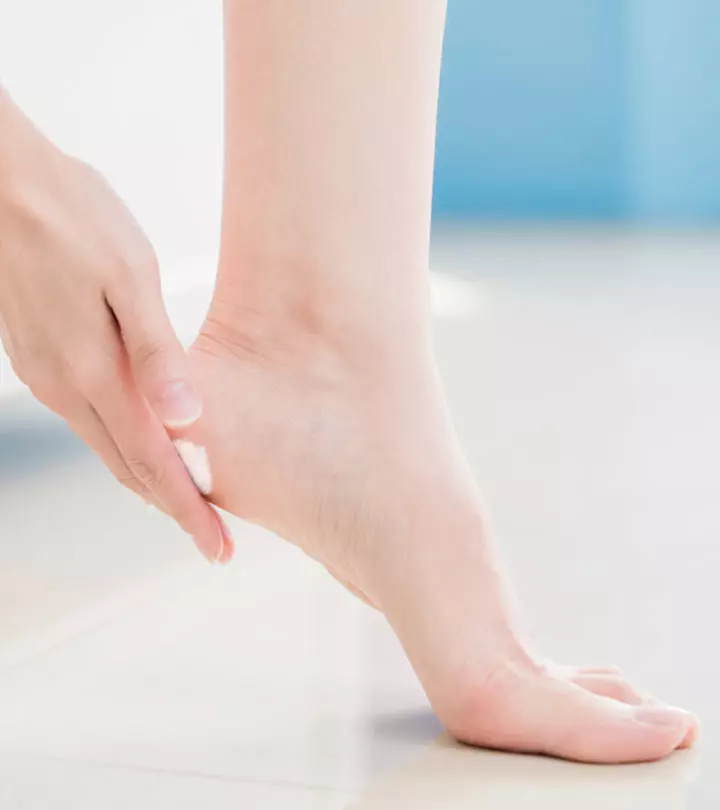

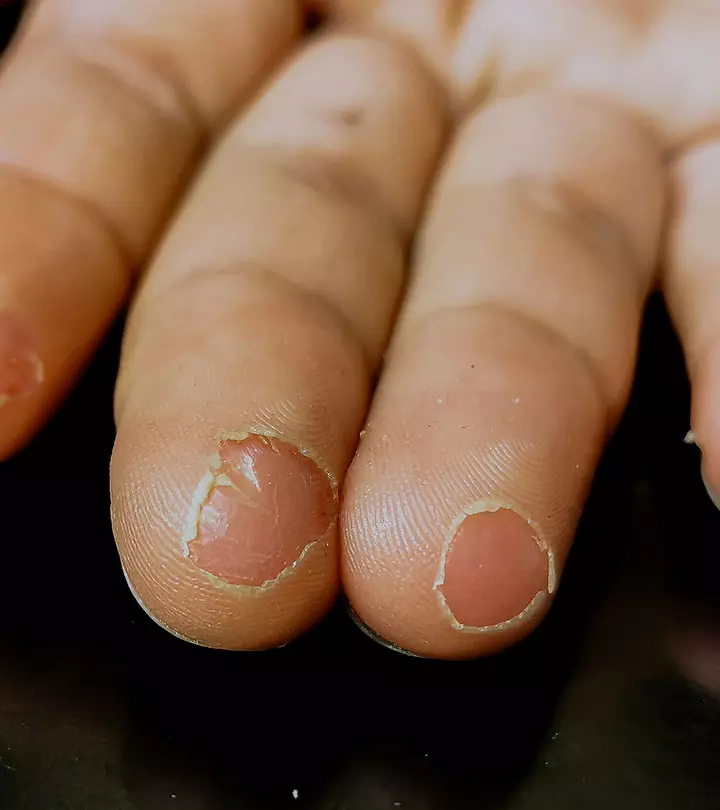


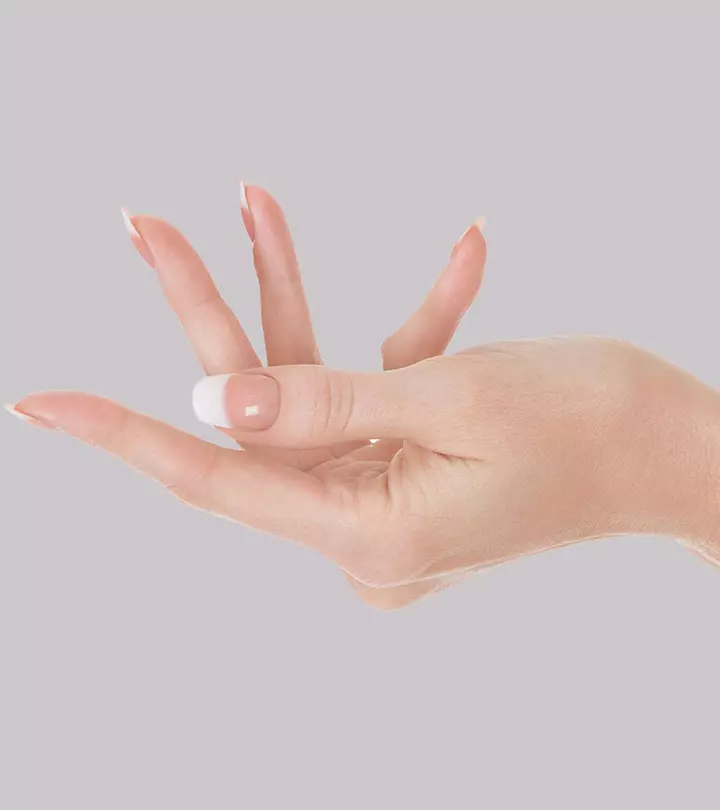

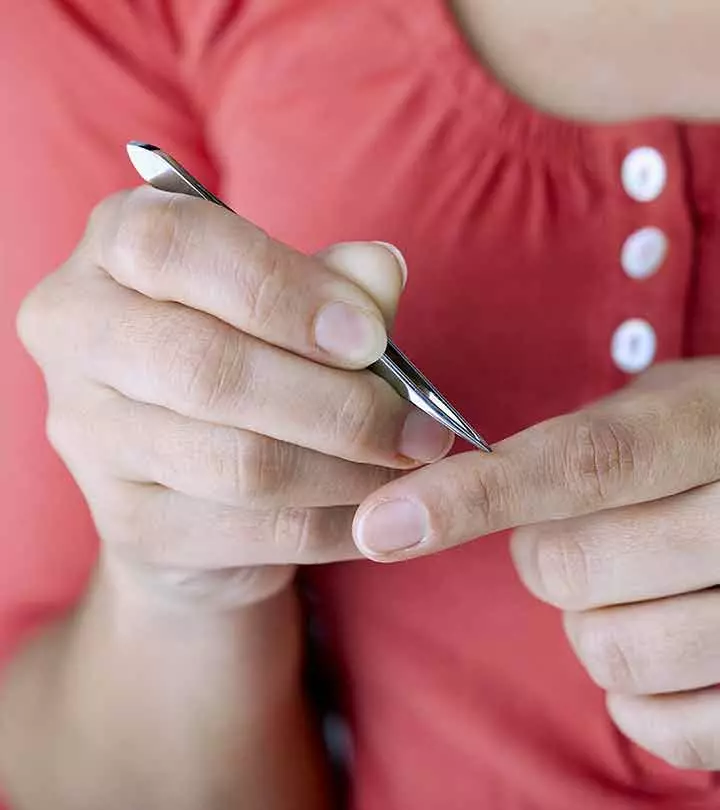
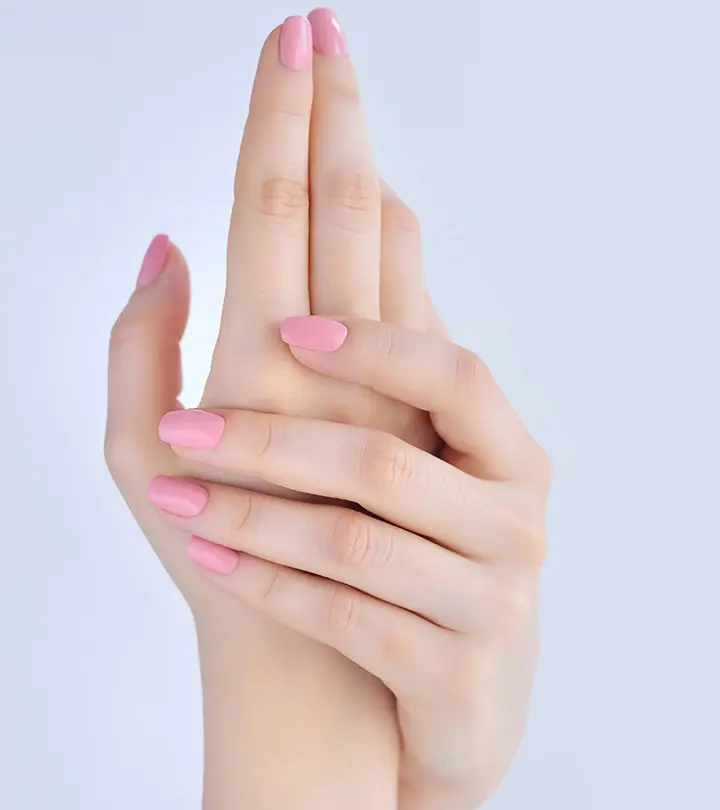



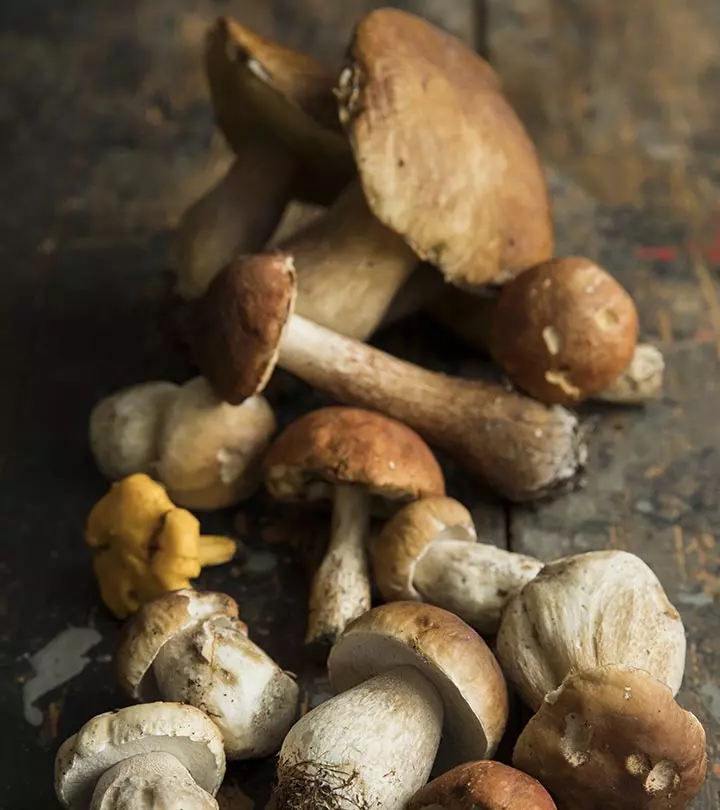
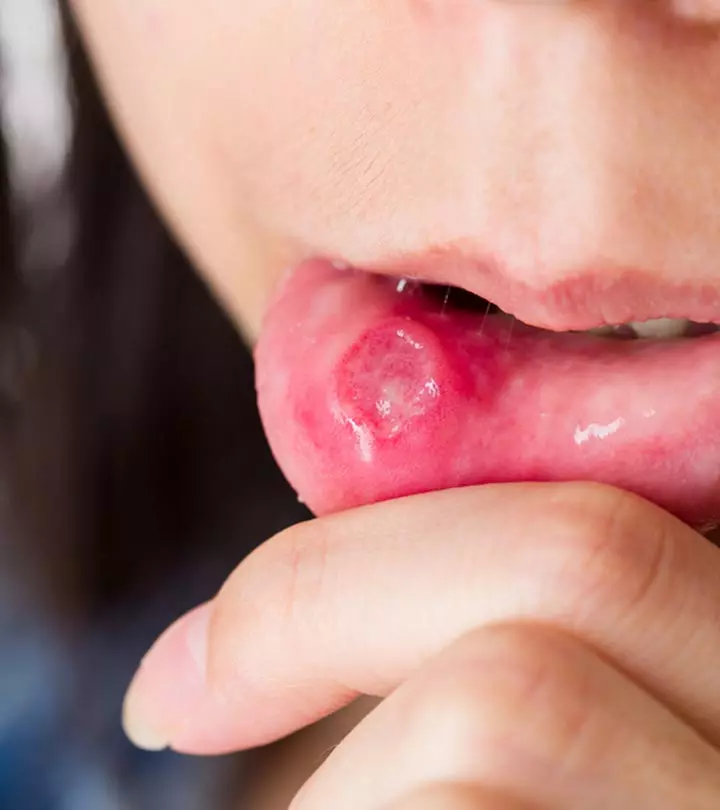



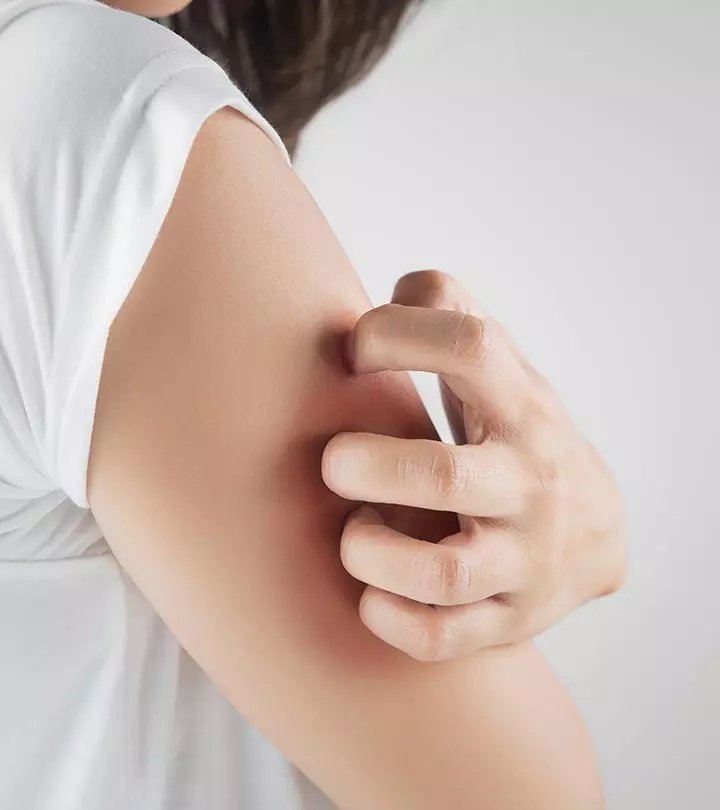


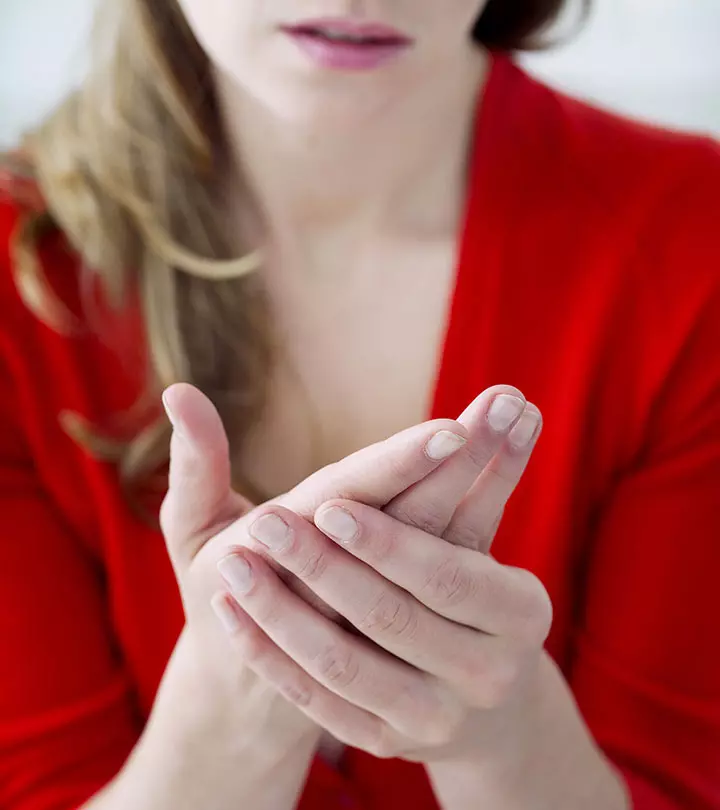
Community Experiences
Join the conversation and become a part of our empowering community! Share your stories, experiences, and insights to connect with other beauty, lifestyle, and health enthusiasts.